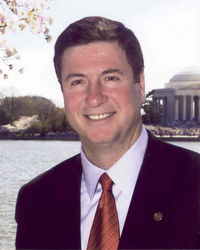 Source of book image: http://www.pupress.princeton.edu/titles/8131.html
Source of book image: http://www.pupress.princeton.edu/titles/8131.html
Virginia Postrel’s periodic column in the New York Times over the past six years, was a beacon of optimism, clarity and fresh insights on how the economy works. The excerpt below is from her last column. Presumably she is moving on to other worthy challenges, but her column in the Times will be missed.
”Low transport costs help make it economically sensible for a factory in China to produce Barbie dolls with Japanese hair, Taiwanese plastics and American colorants, and ship them off to eager girls all over the world,” writes Marc Levinson in the new book ”The Box: How the Shipping Container Made the World Smaller and the World Economy Bigger” (Princeton University Press).
For consumers, this results in lower prices and more variety. ”People now just take it for granted that they have access to an enormous selection of goods from all over the world,” Mr. Levinson said in an interview. That selection, he said, ”was made possible by this technological change.”
. . .
The idea of containerization was simple: to move trailer-size loads of goods seamlessly among trucks, trains and ships, without breaking bulk. But turning that idea into real-life business practice required many additional innovations.
New equipment, from dockside cranes to the containers themselves, had to be developed. Carriers and shippers had to settle on standard container sizes. Ports had to strengthen their wharves, create connections to rail lines and highways, build places to store containers and strike new deals with their unions.
Along the way, even the most foresighted people made mistakes and lost millions. Malcom McLean himself bought fast fuel-guzzling ships right before the 1973 oil crisis and slow, economical ships just as fuel prices turned down. ”Almost everybody who was concerned with containerization in any way at some point got the story wrong,” Mr. Levinson said.
It is a classic tale of trial and error, and of creative destruction.
For the full commentary, see:
The full reference to Levinson’s book is:
Levinson, Marc. The Box: How the Shipping Container Made the World Smaller and the World Economy Bigger. Princeton University Press, 2006.




 Charlie Munger. Sourge of image: online version of the NYT article cited below.
Charlie Munger. Sourge of image: online version of the NYT article cited below.  Alex Tabarrok. Source of image:
Alex Tabarrok. Source of image: